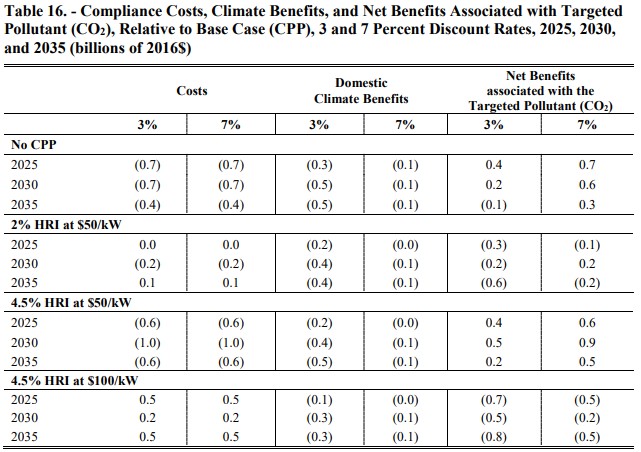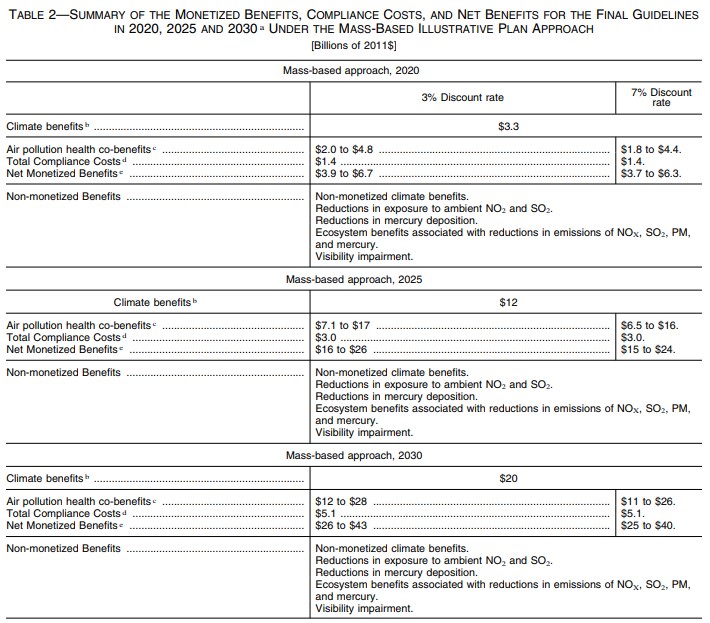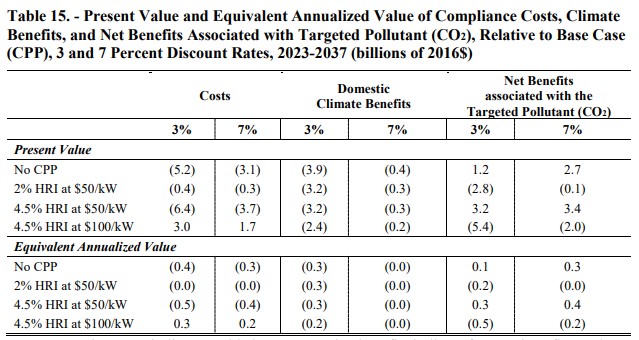Insight
August 22, 2018
EPA Serves Up an ACE
EXECUTIVE SUMMARY
- The Environmental Protection Agency (EPA) has proposed replacing the Obama Administration’s Clean Power Plan (CPP) with a rule that gives states more authority over how they regulate carbon dioxide emissions from coal-fired power plants.
- The EPA estimates the regulation would reduce projected 2025 carbon dioxide emissions (assuming a baseline of no regulation) by between 13 and 30 million short tons.
- The agency also estimates that the proposal could bring up to $6.4 billion in total savings compared to the CPP.
INTRODUCTION
The Environmental Protection Agency (EPA) proposed a rule today that would replace the Obama Administration’s Clean Power Plan (CPP) with a scheme that gives states more authority over how they regulate their coal-fired power plants.
The Affordable Clean Energy (ACE) rule offers three separate actions under one rule. First, it would set emissions guidelines for greenhouse gas emissions from existing power plants. Second, it clarifies the responsibilities of both the EPA and the states in regulating carbon dioxide emissions. Third, it revises regulations around the EPA’s New Source Review (NSR) program to ensure that efficiency improvements to existing plants do not trigger these review requirements. The EPA estimates that the entire proposal could bring up to $6.4 billion in total savings compared to the CPP.
THE END OF THE CPP
While it has been obvious since the onset of the Trump Administration that the CPP would not last, this proposal – if finalized – would officially replace the rule that was the primary climate-change policy of the Obama Administration. The CPP was expensive, at $11.9 billion in total estimated costs, and of dubious legality. Though a final decision on the rule never reached the Supreme Court, the court signaled its skepticism when it stayed the rule pending the conclusion of litigation, an unprecedented action. Consequently, the CPP never took effect.
Upon entering office, President Trump issued Executive Order 13,783, which directed agencies, including the EPA, to review any existing regulations that “unduly burden the development of domestic energy resources beyond the degree necessary to protect the public interest or otherwise comply with the law.” The Trump Administration’s EPA found that CPP qualified for review under these conditions, and it has proposed repealing and replacing it.
HOW THE PROPOSED ACE RULE WORKS
The EPA argues that the proposed ACE rule more closely adheres to the language of the Clean Air Act (CAA) than the CPP. The EPA proposes to define the best system of emissions reduction from power plants as “on-site, heat-rate efficiency improvements.” It also proposes a list of favored technologies that plants can use to increase their efficiency.
The EPA proposes “standards of performance” guidelines on greenhouse gas emissions from coal-fired power plants. States then identify power plants within their borders and develop a plan to utilize those favored technologies to meet the standards. When developing the plan, states can consider the “useable life” of the plant in question, and tailor improvements accordingly. In contrast, the CPP provided states less flexibility to determine on a plant-by-plant basis what improvements could be made.
States would have three years to submit a plan to the EPA for approval. If a state fails to submit an adequate plan, the EPA can impose one on them, although it is more likely the EPA will work with the state to develop an approvable plan based on the EPA’s consistent focus on state flexibility throughout the text of the proposed rule.
In order to ensure that operators can make efficiency improvements to their plants without unnecessary impediments, the EPA also proposes to revise its regulations under the NSR program. NSR is a permitting program that is required when an operator is seeking to build a new facility that will emit a covered air pollutant. NSR also applies to existing sources if they are modified in a way that results in greater emissions. This scenario is possible in the case of carbon emissions from power plants because more efficient plants are likely to be among the first dispatched to the electrical grid. More frequent use of a plant to fulfill the grid’s needs could lead it to emit more in total than it previously did. The proposed ACE rule would effectively exempt modifications at existing power plants aimed at increasing efficiency from NSR review.
EMISSIONS IMPACT
The EPA estimates emissions impacts of the ACE rule in two ways: one against a world in which the CPP was implemented, and one in which it was not. Compared to projected emissions under the CPP, emissions of carbon dioxide would increase between 20 and 37 million short tons. Because the CPP never went into effect, however, the EPA also estimates impacts relative to no CPP implementation. In this more relevant case, the EPA estimates emissions reduction of between 13 and 30 million short tons. So, while the proposed ACE rule is not as stringent as the CPP, it is projected to reduce carbon dioxide emissions, as opposed to repealing CPP without a replacement.
COSTS AND BENEFITS ESTIMATES
The proposed ACE rule’s more constrained approach has important implications for how the EPA arrived at its cost-benefit estimates. The most directly comparable summaries of each primary rulemaking’s cost-benefit calculations are as follows, with the ACE summary in the first table (Table 16) and the CPP summary the second (Table 2):
In focusing merely on the forgone compliance costs and domestic climate benefits, the projected scope of this proposed rule’s economic impact is smaller by orders of magnitude. To better illustrate this, the following table compares the ACE proposal’s “No CPP” net benefits for each analytical year against the CPP’s mid-point net benefits (adjusting from 2011 to 2016 dollars).
| Year of Analysis | “No CPP Case” Net Impact ($2016 Billion) | CPP Net Impact ($2016 Billion) |
| First | 0.7 | 5.3 |
| Second | 0.6 | 20.8 |
| Third | 0.3 | 34.7 |
Of course, the ACE proposal also includes alternative case estimates for illustrative purposes. None of these scenarios, however, strays much farther than $1 billion in either direction from the “No CPP” case.
The above summaries examine each regulatory scheme’s effects on three specific years of implementation. Another core difference in the ACE rule’s preliminary Regulatory Impact Analysis (RIA) is the inclusion of a “present value” and “annualized” impact estimate across the span of 2025 through 2037.
The EPA provides this summary to illustrate how the proposal would affect its “regulatory budget” under Executive Order (EO) 13,771. While it is difficult to know A) which fiscal year (FY) budget the final version of this rulemaking will apply to and B) which estimate EPA will settle on its “most definitive” for EO 13,771 purposes, the potential annual impacts range from roughly $200 million in net costs to $400 million in net savings (at a 7% discount rate). The EPA casts doubt on the one net-cost scenario coming to fruition as it “would represent project costs that states would likely find to be unreasonable.” Meanwhile, the scenario with the highest savings ceiling “represents an optimistic bounding where NSR reform unleashes significant new opportunity for low-cost heat rate improvements.” For perspective, the EPA has accrued $91.8 million in net savings through the first 10 months of FY 2018.
CONCLUSION
The EPA’s proposed ACE rule aims to track closely to the legal threshold of what is required by the agency under the CAA and the EPA’s finding that greenhouse gases pose a danger to human health. The proposal reflects the EPA’s thinking that it must do something to regulate greenhouse gases, but the CPP severely overstepped its authority. The legal action surrounding the CPP supports this conclusion. Once the proposed rule is finalized, it is certain to be subject to further litigation. While the proposed ACE rule seems closer to the statutory language of the CAA than the CPP, only time will tell if the agency struck the appropriate balance.














